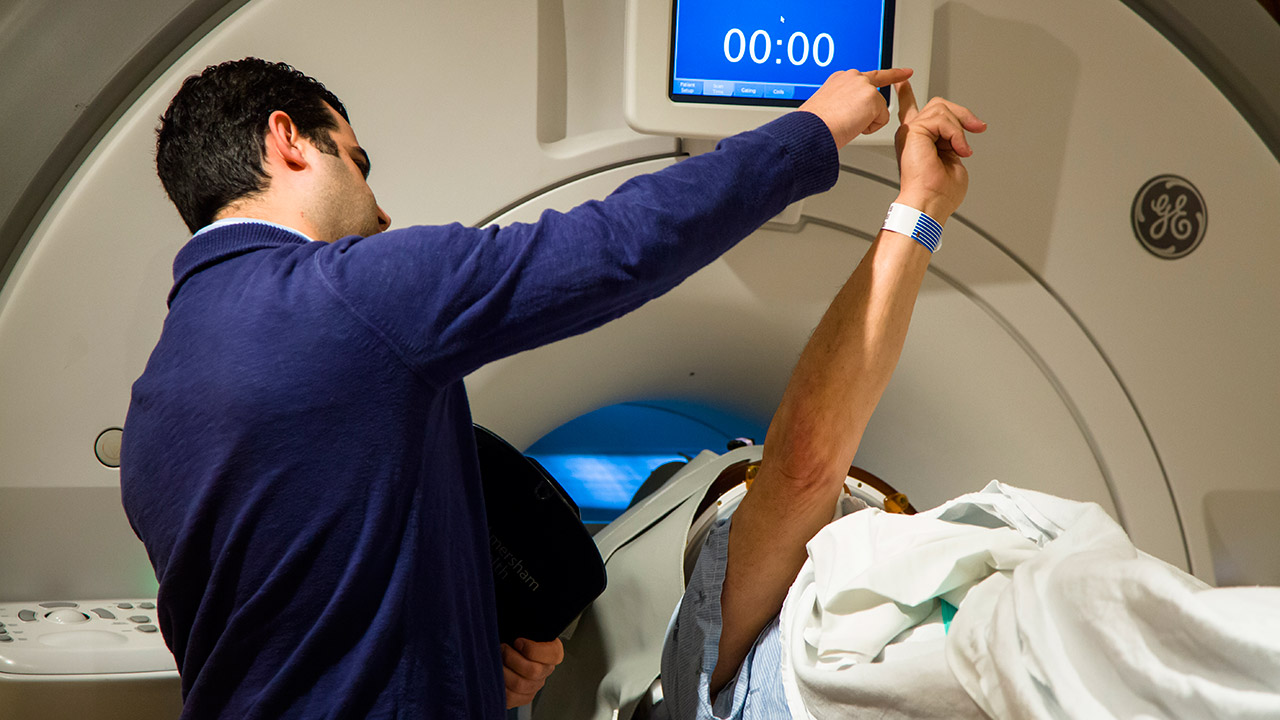Scalpel-free surgery for essential tremor is effective & safe
An international multi-centre, randomized controlled trial has found that MRI-guided focused ultrasound for moderate-to-severe essential tremor is both effective and safe, improving symptoms and quality of life for patients with this common movement disorder.
“Using the most rigorous scientific standards, we have shown that focused ultrasound is an effective, and safe, treatment for essential tremor not responsive to medication,” explains Dr. Nir Lipsman, neurosurgeon and scientist at Sunnybrook Research Institute and co-investigator of the international multi-site trial published in the New England Journal of Medicine. “There are major implications for the future treatment and care for patients living with this neurological disorder which is a source of significant disability."
Seventy-six patients with medication-resistant essential tremor were randomized to receive unilateral focused ultrasound or a sham procedure in which no acoustic energy was delivered. After three months of treatment, tremors in patients receiving focused ultrasound improved by 46 per cent, compared with 0.1 per cent improvement in those receiving sham procedures, using the Clinical Rating Scale for Tremor. This pattern continued in the focused ultrasound group, at 40 per cent, at one year. Tremor assessments were videotaped and rated by an independent group of neurologists who were unaware of which patients were in the control group.
The technology allows investigators to focus ultrasound waves under MRI guidance through a patient's skull to reach an area located deep in the brain. Focused ultrasound is then used to lesion the cells that are responsible for the tremor. The real-time MR images allow the surgeon to target the sound waves very precisely and provide continuous guidance and thermal feedback. The patient remains awake and alert during treatment and can go home the next day.
“This is a very important step validating the feasibility of non-invasive brain surgery using MRI-guided focused ultrasound. This device will open up a new era that will revolutionize the way brain diseases will be treated eventually benefitting millions of patients,” says Dr. Kullervo Hynynen, director of Physical Sciences at Sunnybrook Research Institute, who worked with industry partner Insightec for almost two decades to develop the technology and bring it to a clinic-ready state. He was the first to pair MRI with focused ultrasound.
“We saw firsthand the vast improvement in patients’ disability, particularly in the areas of drinking from a cup and writing,” says Dr. Lipsman.
The results noted that gait disturbance initially occurred in 36 per cent of patients and numbness in 38 per cent, decreasing to 9 per cent and 14 per cent respectively at 12 months into the trial.
The study was a collaboration between Insightec, the Focused Ultrasound Foundation (FUSF) and eight academic medical centers; Sunnybrook was the sole Canadian site. The study was funded by a partnership between FUSF, Insightec and the BIRD (Israel-US Binational Industrial R&D) Foundation.
The safety and clinical results of this trial were reviewed by Health Canada and the FDA, which have now approved MR-guided Focused Ultrasound for the management of refractory essential tremor.
Essential tremor is a nervous system (neurological) disorder that causes involuntary and rhythmic shaking. It can affect almost any part of the body, but the trembling occurs most often in one’s hands — especially with simple tasks, such as drinking from a glass or tying shoelaces.












